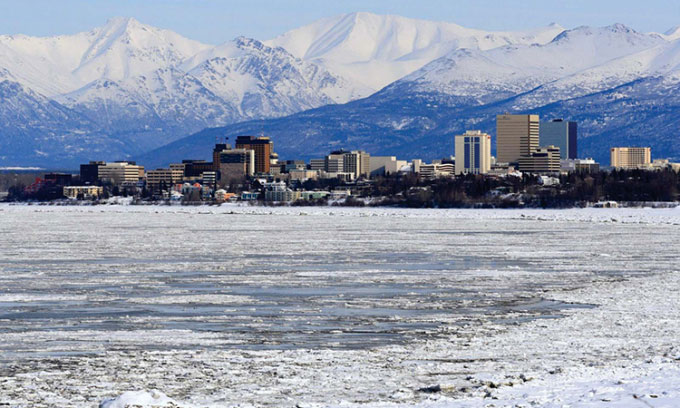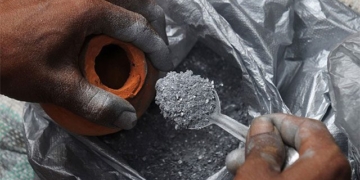The research team proposes using aircraft to spray aerosol particles at an altitude of 13 km near the Arctic and Antarctic to reduce temperatures by 2 degrees Celsius in these regions.

Anchorage, southern Alaska. (Photo: Frank Kovalchek).
Scientists have outlined a plan to use jet aircraft to spray ultra-fine aerosol particles into the atmosphere to “re-refrigerate” areas surrounding the Arctic and Antarctic. The new study, utilizing Stratospheric Aerosol Injection (SAI) climate intervention technology, was published in the journal Environmental Research Communications on September 15.
The plan specifically targets regions around the poles rather than implementing a global intervention like most other SAI activities. Specifically, 125 SAIL-43K aircraft will release a cloud of ultra-fine SO2 particles at an altitude of 13 km, at 60 degrees latitude North and South, sufficient to cool these areas by about 2 degrees each year. Regions such as southern Alaska and the southern tip of Patagonia could return to temperatures closer to pre-industrial averages. As the particle cloud drifts towards the poles with the wind, it will cover part of the Earth’s surface below.
The new plan is expected to leverage the abundant and readily available commercial airports in the Northern Hemisphere. For example, the city of Anchorage, southern Alaska, has three runways longer than 3,200 meters and is located at 61.2 degrees latitude North – a position close enough to implement the plan. In the Southern Hemisphere, the situation is more complex due to fewer and more distant airports. However, airports in Chile and Argentina, south of the Patagonia region, may be relatively suitable.
Existing infrastructure on the ground will need to be improved for the plan’s implementation. The estimated cost of the plan is around $11 billion per year, which is less than one-third of the cost of cooling the entire Earth by 2 degrees Celsius using other methods, such as carbon capture.
The new plan raises concerns as the exact unintended consequences of spraying SO2 particles into the atmosphere are not fully understood, such as the potential reduction in crop yields. However, the research team argues that their plan would be deployed over areas with less than 1% of the world’s population and virtually no agricultural activity, making it a method worth considering due to its feasibility and low cost.


















































